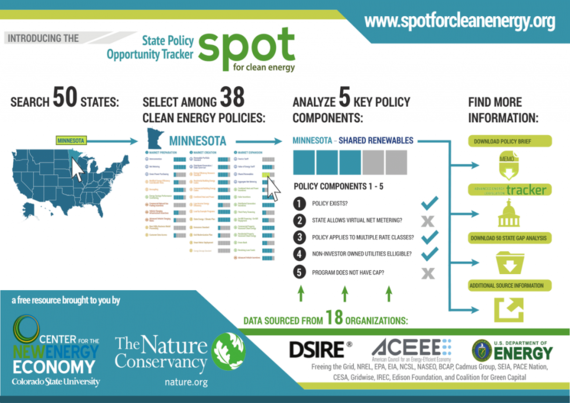It is a safe bet that the drama of the 2016 presidential election will become even more intense between now and November. As a result, other important elections may get less attention than they deserve.
I'm referring to races for governorships and seats in state legislatures. Voters will elect 12 governors this November and fill 80% of state legislative seats. The outcome of these races will have a lot to do with our freedom to choose where our energy comes from. That in turn will have a lot to do with several issues that voters of both political parties consider important this year.
When it comes to energy choices and the closely related issue of global climate change, state and local leaders have more power than the President of the United States or Congress.
Can you put a solar panel on your roof to make some of your own electricity? Or will your energy choices be dictated by the monopoly known as your local investor-owned electric utility? How much will your utility pay you for the excess power you produce with your solar system? That depends on your state's Public Utility Commission. Will you be forced to sit in traffic jams and waste gas when you try to get around your city? That depends on the decisions local officials make about urban design and the types of mobility they fund.
Is your air going to get cleaner and asthma less common because electric utilities generate power with solar and wind technologies rather than coal? That depends on whether your state legislature establishes and keeps requirements that utilities generate part of their electricity with renewable resources.
Will your home or business give you all the comfort and convenience you need as well as lower energy bills? That may depend on whether your community has an energy efficiency building code and whether your city offers financing for efficiency improvements to your building.
If you'd like to learn whether your state is a leader or a laggard in modern clean energy policies, there is now an easy way to do it. The Nature Conservancy and the Center for the New Energy Economy (CNEE) at Colorado State University have just launched a website that shows each state's progress, or lack of progress, on 38 policies (shown in the illustration) related to renewable energy, energy efficiency, financing, infrastructure and transportation. The tool is called the State Policy Opportunity Tracker for clean energy, or SPOT.
The tool is meant to help state officials conduct a "gap analysis" of their energy policies - in other words, to identify the clean energy policies they may be missing. If there are gaps - for example, a weak Renewable Energy Portfolio requirement for utilities or utility rate policies that undermine the economics of rooftop solar panels - SPOT will identify them.
CNEE points out that SPOT is not meant to be a scorecard or a voters' guide. Be that as it may, the tool can help voters as well as candidates assess how the energy policies in their states compare to others.
Why is that important? Republicans and Democrats do not agree on much these days, but they apparently do concur on the most important issues that presidential candidates should be addressing right now. Gallup found earlier this year that there are four issues the presidential candidates should be talking about: terrorism and national security, the economy, jobs and health care.
Our energy choices and the federal, state and local policies that influence them have significant impacts on all four. And in some states right now, battles are underway over the right of citizens to choose that at least part of their electricity comes from clean and renewable energy.
I'll write more about this in Part 2.

